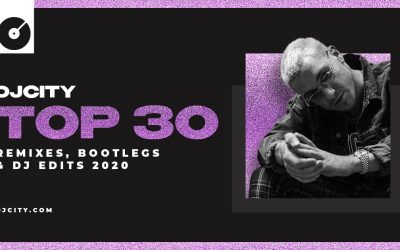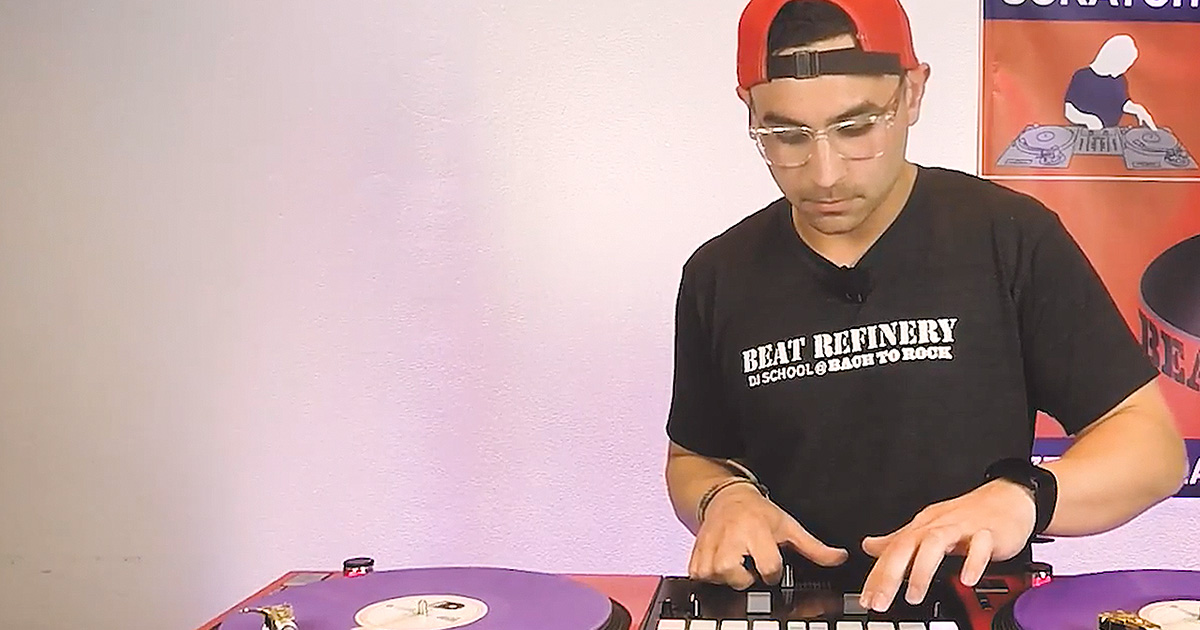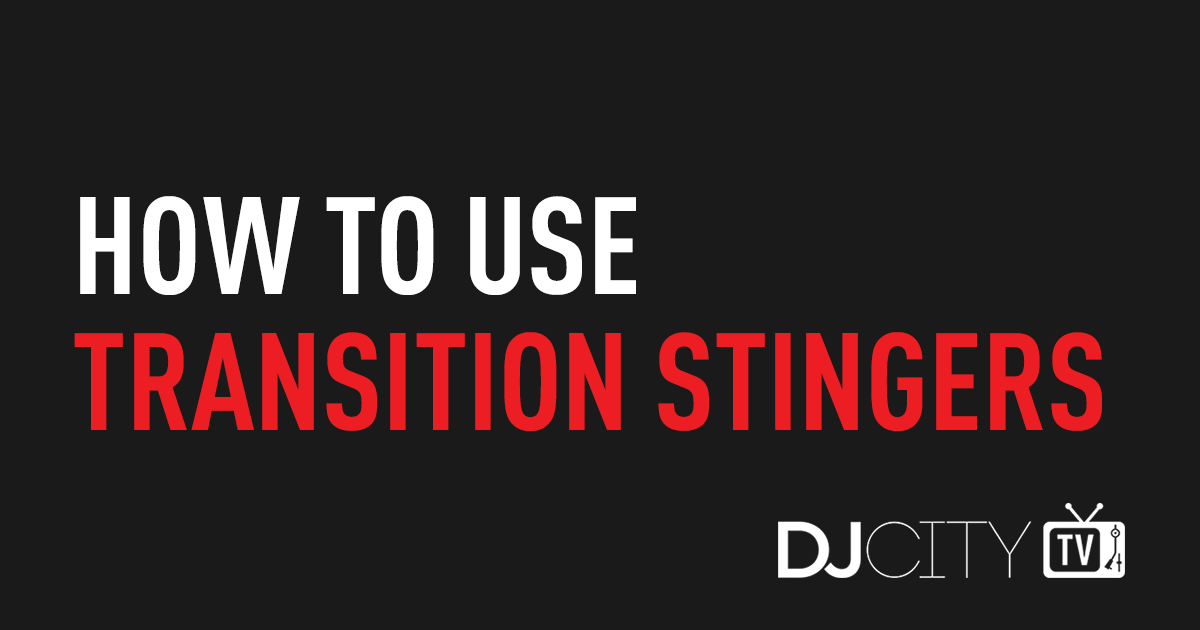Turntable Techniques
How to Play Melodies With Serato’s Pitch ‘n Time
Serato’s Pitch ’n Time plugin can be used to play virtually any melody using a single cue point. By following a few easy steps, you can use the performance pads on a mixer to shift a cue point’s key, enabling you to perform creative tone play routines.
Watch Beat Refinery’s DJ Little Rock demonstrate the technique on this episode of Turntable Techniques.
Using the Echo Effect to Transition Between Songs With Different Tempos
Not every turntable has a wide pitch range, which makes it difficult to transition between songs of different tempos. However, if you have a mixer that has an internal echo effect, you can transition with ease.
On this episode of Turntable Techniques, Beat Refinery‘s DJ Little Rock demonstrates how to use the technique with two examples.
Watch the tutorial above.
Related: How to Redrum With Roland’s DJ-808
How to Redrum With Roland’s DJ-808
On this episode of DJcityTV and Beat Refinery’s Turntable Techniques, Trayze explains how to do live redrums with Roland’s DJ-808 controller using its TR-S drum machine and sounds. The technique can be used to beef up sections of tracks that don’t have drums (e.g.: the breakdown).
Related: Review: Roland DJ-808 Controller
How to Use Pitch ‘n Time’s Key Sync Feature
Serato DJ’s Pitch ‘n Time plugin enables DJs to shift and sync the key of a track. It improves your ability to mix harmonically, helping to make your blends and transitions sound cleaner.
On this episode of Turntable Techniques, Beat Refinery instructor and 2016 Red Bull 3style U.S. Champion Trayze breaks down how to use Pitch ‘n Time’s key sync feature.
Watch the tutorial above.
Turntable Techniques: Asymmetrical Looping
Many DJs use symmetrical loops to loop melodies or drum patterns in continuous cycles. Asymmetrical loops, however, have distinct beginnings and endings. They can be used to change rhythms and create patterns on the fly.
Watch the Beat Refinery‘s Obeyah explain how to use them on this episode of Turntable Techniques.
Using Loop Techniques to Mimic the Echo Effect
Popular mixers such as the Rane Sixty-Two and Pioneer DJM-S9 have a built-in echo effect, but a lot of mixers don’t. On this episode of Turntable Techniques, the Beat Refinery‘s As-One demonstrates a couple of ways to mimic the feature with your DJ software.
“It’s great to have these new fancy mixers with tons of onboard effects. But at the end of the day, the best trick in your bag is to master your software, so you’re not relying on any particular piece of DJ gear.”
Watch the tutorial above.
How to Use Custom Cue Points in Serato DJ
Customizing the cue points in your DJ performance software can streamline and open up new options for your sets. On this episode of Turntable Techniques, the Beat Refinery‘s DJ As-One discusses how to use them in Serato DJ.
Related: How to Use ‘Transition Stingers’
Turntable Techniques: How to Use ‘Transition Stingers’
DJcityTV and Beat Refinery are back with a new episode of the tutorial series, Turntable Techniques. This time, DJ As-One demonstrates how to use “transition stingers” in DJ sets.
Transition stingers are exclusive performance tools that start at one tempo and end with a sample. They enable DJs to drop a song of any tempo immediately after the current track. By being able to jump around different BPM ranges, DJs can add creativity to their sets.
Watch As-One break down how to use stingers above and download them only on DJcity.
How To DJ House Music Like a Dancehall DJ
Reggae and dancehall DJs, known in Jamaica as “selectors,” are known for mixing multiple “versions” of the same instrumental with different vocalists. The technique can also be used outside of those genres, and is a great way to add creativity to your set.
On this episode of DJcity and Beat Refinery‘s Turntable Techniques, Washington, D.C. DJ/producer Obeyah explains how to mix
Related: How to Perform the ‘Rockit’ Scratch
Turntable Techniques: How to Perform the ‘Rockit’ Scratch

DJcity and Beat Refinery have released a new episode of the tutorial series, Turntable Techniques. In the video, DJ As-One explains how to do the “Rockit” scratch, which Grandmixer D.ST performed on Herbie Hancock’s 1983 hit of the same name.
The song was the lead single off Hancock’s landmark album, Future Shock, which saw him venture into the worlds of electro-funk and instrumental hip-hop. “Rockit” is recognized as the first popular single to feature scratching and has been cited by DJ QBert and Mix Master Mike as a pivotal influence on them.
“You can gauge a DJ’s skills by when they use [the ‘Rockit’ scratch],” QBert said in the documentary Scratch.
Watch As-One break it down below.
Related: How to Make Acapella Edits for Your DJ Sets Using Ableton Live
Popular
-
December 19, 2019
Top 30 Remixes, Bootlegs and DJ Edits of 2019

Yesterday, DJcity revealed its most downloaded tracks of 2019. Today, we dive deeper to uncover the most popular remixes, bootlegs, and edits of the year...
-
December 29, 2020
Top 30 Remixes, Bootlegs and DJ Edits of 2020

Yesterday, DJcity revealed its most downloaded tracks of 2020. Today, we dive deeper to uncover the most popular remixes, bootlegs, and edits of the year...
-
July 26, 2021
Listen to DJ Lady S’ DJcity Podcast Mix

DJ Lady S was born in Belgium and is currently based in New York. She has evolved musically from her love of hip-hop and RnB to house, afrohouse, techno, a...
-
June 28, 2016
DJ Cable Presents ‘The Best Of UK Garage’ Mix

London's DJ Cable is back with part two of "The Best Of" mix series, this time dropping 60 minutes of the biggest and baddest UK Garage house bangers. Stre...
-
January 24, 2018
Watch Jax Jones’ ‘Breathe’ Video Feat. Ina Wroldsen

Following the release of his latest single "Breathe," English DJ, producer, and songwriter Jax Jones has returned with a video for it. The uptempo track, w...
-
September 21, 2018
Artists Can Now Upload Their Music Directly to Spotify

Spotify has announced a new feature that could transform the music industry. The feature, which is part of the Spotify for Artists platform, enables acts t...
-
May 17, 2017
A Look Inside the Beat Junkies’ DJ School

In April, the legendary Beat Junkies crew launched a DJ school called The Beat Junkie Institute of Sound. Located in Glendale, California, the school offer...
-
February 12, 2018
Calvin Harris Talks New Single, New Musical Direction, and Thoughts on EDM

Calvin Harris Fresh off the release of his dancehall-influenced single “Nuh Ready Nuh Ready” featuring PARTYNEXTDOOR, Calvin Harris joined Annie Mac for an...
-
July 16, 2021
DJ Yanez Delivers ‘DJcity Podcast’ Mix

DJ Yanez is from Palermo, Italy. He's the official DJ for the Italian reggae group, Shakalab. Yanez has performed at clubs in countries like Egypt, Germany...
-
October 11, 2017
PBH & Jack Shizzle Remix, The Notorious B.I.G.’s ‘Hypnotize’

PBH & Jack Shizzle have a great track record on DJcity UK with the majority of their releases making it on our daily UK top downloads chart, many of wh...










